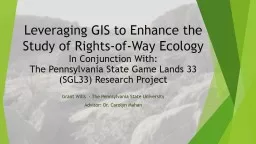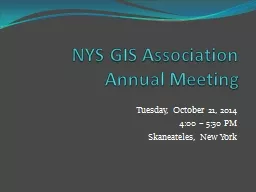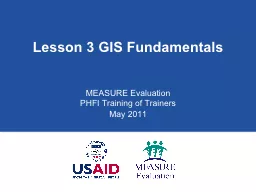PPT-Leveraging GIS to Enhance the Study of Rights-of-Way Ecology
Author : alexa-scheidler | Published Date : 2018-10-29
Grant Wills The Pennsylvania State University Advisor Dr Carolyn Mahan In Conjunction With The Pennsylvania State Game Lands 33 SGL33 Research Project Presentation
Presentation Embed Code
Download Presentation
Download Presentation The PPT/PDF document "Leveraging GIS to Enhance the Study of R..." is the property of its rightful owner. Permission is granted to download and print the materials on this website for personal, non-commercial use only, and to display it on your personal computer provided you do not modify the materials and that you retain all copyright notices contained in the materials. By downloading content from our website, you accept the terms of this agreement.
Leveraging GIS to Enhance the Study of Rights-of-Way Ecology: Transcript
Download Rules Of Document
"Leveraging GIS to Enhance the Study of Rights-of-Way Ecology"The content belongs to its owner. You may download and print it for personal use, without modification, and keep all copyright notices. By downloading, you agree to these terms.
Related Documents














